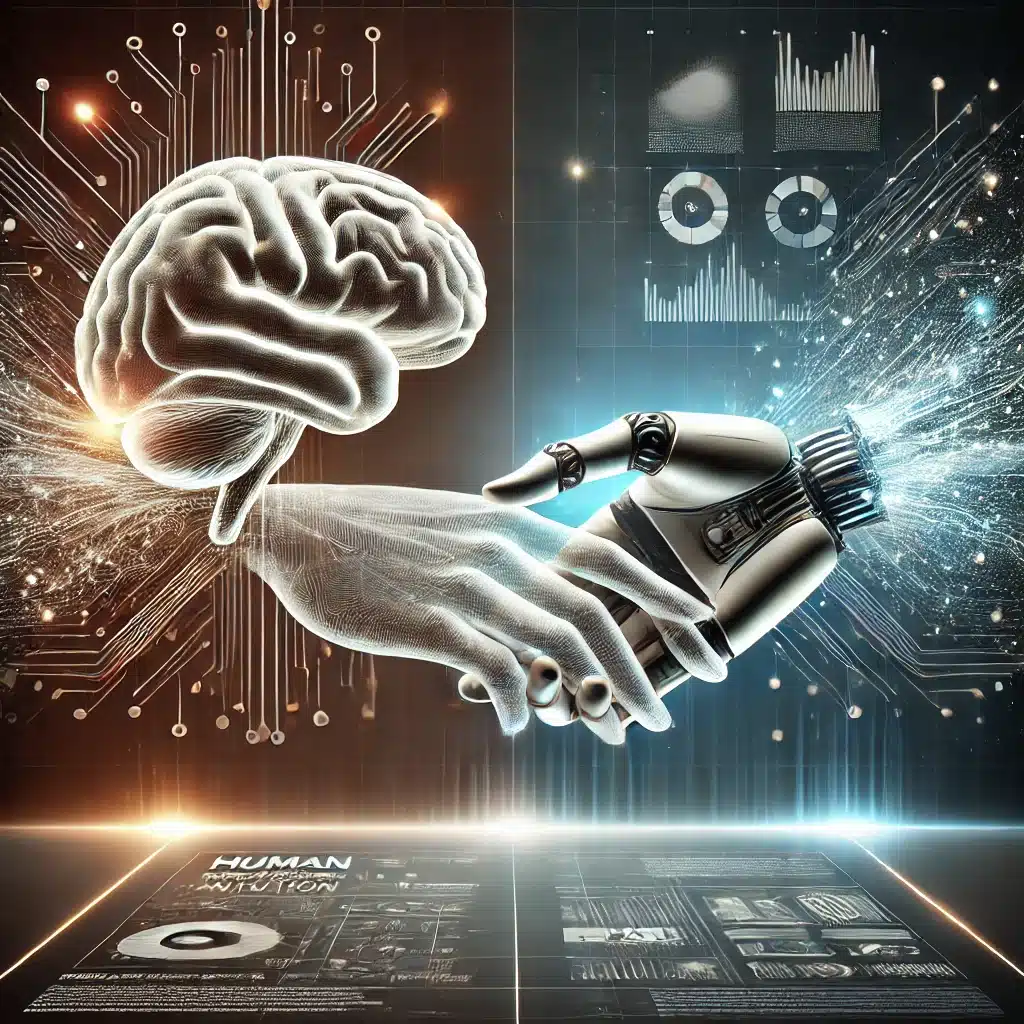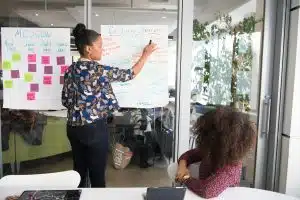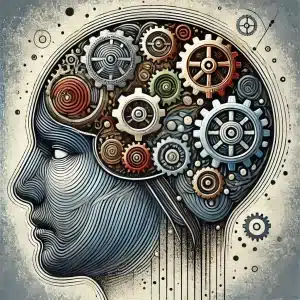If you work in a large organisation, AI might already be part of your day-to-day reality. Companies like AstraZeneca, for example, have launched global AI upskilling initiatives—training over 8,000 employees through their Generative AI Accreditation Programme to confidently use AI tools in their work. In environments like these, AI is no longer “emerging”—it’s embedded.
But if you’re in a small or medium-sized enterprise (SME), your AI journey might be just beginning. Many HR leaders in smaller organisations are still exploring what’s possible, wondering where to start, how to build capability, and how to keep the human touch and ethics at the centre of it all.
In this article, I explore how AI is reshaping the HR landscape for everyone, from global players to growing businesses. Through the story of Emma, an HR Director navigating these changes, we’ll look at how AI is transforming recruitment, engagement, and leadership, and what it takes to lead the shift with confidence, clarity, and compassion.
The Rise of AI in HR
Artificial Intelligence is no longer confined to sci-fi novels or tech labs. It has woven itself into the fabric of everyday business practices. For HR leaders, AI offers tools to revolutionise the function—for example, in recruitment, employee engagement, and learning & development. These are just a few areas; the opportunities are evolving fast and expanding across every corner of the employee experience.
According to a PwC study, AI could contribute up to £320 billion to the UK economy by 2030, accounting for 10% of GDP. In HR specifically, AI-powered tools such as Applicant Tracking Systems (ATS), predictive analytics, and chatbot-driven employee engagement platforms have seen widespread adoption. A report by Gartner revealed that by the end of 2023, 17% of organisations worldwide were using AI-based HR tools, a number expected to grow rapidly.
Recruitment Reimagined
Emma, the HR Director at a medium-sized company in London, knew recruitment needed to change. Her team spent hours manually screening hundreds of CVs, selecting candidates and conducting interviews—a process that was slow and sometimes unintentionally biased. When they introduced AI-powered platforms like HireVue and HiBob, everything shifted. These tools helped her team assess candidates more objectively and efficiently.
The results were clear: the average time-to-hire dropped from 90 days to just 60. According to LinkedIn’s Global Trends Report, 76% of recruiters now say AI helps them identify better-qualified candidates. For Emma’s company, the quality of hires improved, and her team had more time to focus on the human side of hiring.
Enhancing Employee Engagement
Once new hires were in place, Emma turned her attention to engagement. Gallup’s State of the Global Workplace report found that only 20% of employees worldwide feel engaged at work. Emma knew that they had to change.
Using HiBob and Workhuman, her team gathered real-time feedback and identified trends they would have otherwise missed. They used the insights to implement targeted actions, which led to a 25% increase in employee engagement scores in just 6 months. AI wasn’t replacing connection—it was strengthening it.
Reskilling, Upskilling and New Tools
In large organisations like AstraZeneca, AI upskilling is already well underway. But for SMEs, upskilling is a crucial step in building readiness. Automation and AI have raised fears about job displacement. A report by the World Economic Forum projected that by 2025, 85 million jobs could be displaced by AI, but 97 million new roles may emerge, requiring different skill sets.
Emma recognised this shift and invested in reskilling programmes to future-proof her workforce. But it wasn’t just about learning new skills—it was also about learning to use new tools. Her team needed hands-on experience with platforms like AI-powered HR systems, data dashboards, and digital collaboration tools.
She partnered with providers to offer live demos and practical challenges, helping employees build real confidence using the technology. With consistent support and encouragement, she turned initial resistance into curiosity and eventually into capability.
The Ethical Conundrum
AI brought efficiency, but also tough questions. Could too much reliance on algorithms undermine human judgement? What about data privacy?
A survey by the CIPD found that 60% of employees were uncomfortable with AI systems tracking their behaviour at work.
Emma knew that ethical leadership mattered more than ever in an AI-driven workplace. She implemented transparent policies outlining exactly how AI tools were used, what data was collected, and how it would be protected. She ensured full compliance with data protection regulations and created open channels for employees to ask questions, raise concerns, and contribute their perspectives. Emma also led workshops to educate employees on AI ethics, helping people understand the balance between innovation and responsibility. Her proactive, people-first approach helped build trust, reduce fear, and set a new standard for ethical leadership in HR.
Where Do We Go From Here?
Human-AI Collaboration: AI isn’t here to replace people (or at least, it shouldn’t be!)—it’s here to work alongside them. Emma’s team began using AI for admin and repetitive tasks and to streamline processes, which freed up time for strategic work and people-focused leadership. The goal wasn’t to remove the human element—it was to strengthen it.
That said, this may not be true in every context. In some sectors or roles, the integration of AI can lead to reduced headcounts or significant role redesigns, especially where tasks are easily automated. It’s important for HR leaders to assess the impact of AI thoughtfully, involve employees in the conversation early, and focus on how technology can support—not replace—human contributions wherever possible.
Personalisation at Scale: With AI, Emma began offering more tailored employee experiences—custom learning paths, adaptive career development plans, and even personalised wellbeing support. AI made it possible to care for each employee without compromising on scale or speed.
AI Agents: I’m now exploring AI Agents and will be using Replit to experiment with what’s possible. For HR leaders, Replit can be a powerful space to build simple AI-powered apps or automations—like an interview question generator, a basic chatbot for policy FAQs, or even a dashboard that summarises employee feedback data. You don’t need to be a coder to start. With Replit’s templates and AI assistant, you can test ideas and see what’s possible, without waiting for IT to build it for you.
Whether you’re in a global corporation or a growing SME, now is the time to explore what’s possible. Start small. Involve your people. Stay human. Let AI handle the data, so you can lead with heart.
The future of HR is not just tech-enabled—it’s human-led.
P.S. Yes, the answer is yes. If you’re wondering whether I used AI in writing this article, I absolutely did. Emma is a fictional name, but her journey is based on real examples and lived experience. I’ve worked with or reviewed the HR platforms mentioned here, and no, I’m not getting paid to say nice things about them (sadly!). This is simply what I know works, what I’ve seen in action, and what I believe HR leaders need to know right now.
P.P.S. I’d love to hear from you. What AI tools or platforms have you tried or recommend in your HR practice? Share in the comments—let’s learn from each other.





